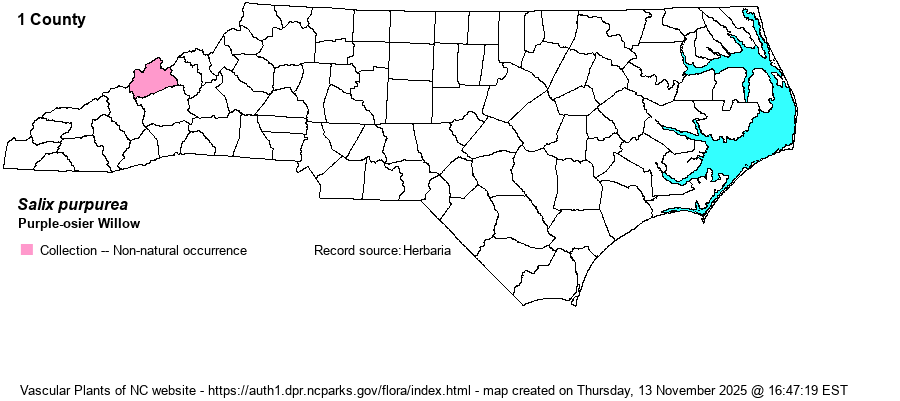| Author | L. | |
| Distribution | There is only a single collection: Madison County, 0.1 mile NE of Whiterock, 6 June 1958, Ahles & Duke 42589 (NCU, USF).
A second collection, from Buncombe County, is from a cultivated plant.
Native to Europe; in N.A. Newf. to Ont., south to GA and MO; UT, CA, OR. | |
| Abundance | Very rare. | |
| Habitat | Stream bank. | |
| Phenology | Flowering April. | |
| Identification | This is a short to moderate shrub. Leaves are slender and tapered to both ends, broadly linear to narrowly lanceolate. Most leaves are alternate, but at least some are opposite or subopposite and thus unlike any of our willows. | |
| Taxonomic Comments | The genus Salix is a very large and complex group of plants that vary from ground-hugging Arctic belly plants to huge trees. There are 113 species in North America alone, including introduced species. They are extremely important to browsing mammals -- rabbits, deer, elk, muskox, moose, many rodents -- and browsing birds like ptarmigan. Many birds use them to nest in. Here in NC we only have a small number of native species (5) and so do not appreciate the ecological importance of willows. We highly recommend reading the introductory pages of George Argus's FNA treatment (2010) and his excellent monograph on the willows of the southeastern U.S. (1986). The latter has drawings and descriptions of all southeastern U.S. taxa. Due to natural and horticultural hybridization, some plants will not key cleanly and you may have to compare your specimen with others verified by Argus. | |
| Other Common Name(s) | Basket Willow | |
| State Rank | SE | |
| Global Rank | G5 | |
| State Status | | |
| US Status | | |
| USACE-agcp | FACW link |
| USACE-emp | FACW link |

